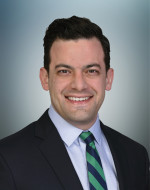Pediatric Orthopaedics
Pediatric orthopaedics is a specialty focusing on children from infancy to 18 years of age. It involves the diagnosis and treatment of orthopaedic problems intrinsic to the developing body. Many of the orthopaedic problems of children are unique to their age group and treatment will often affect the adult lives of young patients.
As the young body grows, problems related to particular stages of development may arise. Developmental dysplasia of the hip, for instance, is a condition specific to infancy. Immediate treatment can result in a normal hip. Lack of treatment or complications may result in severe lifelong disability.
Other areas of specialty in pediatric orthopaedics include congenital deformities such as club feet and extra digits, fractures which affect bone growth, scoliosis which may result in severe back deformity, and neuromuscular diseases such as cerebral palsy and muscular dystrophy.
SCOLIOSIS
Spine deformities such as scoliosis and kyphosis are skeletal problems that result in curvature of the spine. In scoliosis, the curvature is lateral and often causes rotation of the vertebra which in turn causes a rib hump deformity. In kyphosis, an excessive posterior curve of the spine gives a "round back" appearance. Treatment for spine deformities includes bracing as well as surgical options.
Other problems of the spine may occur as a result of significant injury, tumor or infection. When a slip of one vertebrae on another occurs, it may be as a result of a stress fracture in adolescence. This condition is known as spondylolisthesis and may cause back pain as well as leg pain. In addition, many of the neurologic diseases such as cerebral palsy and poliomyelitis may cause spinal deformities which require treatment.
CONDITIONS:
Pediatric Orthopaedics covers a wide range of orthopaedics conditions, disorders, and injuries from newborn to 18 years of age, including, but not limited to:
- Sprains, strain, dislocations and fractures (from infancy to 18 yeas of age)
BIRTH DISORDERS:
- Brachial plexus birth palsy
- Congenital limb defects
- Pigmented villonodular synovitis
BONE DISORDERS:
- Aneurysmal bone cyst
- Bowlegs
- Growth plate fracture
- Legg -Calve-Perthes disease
- Nursemaid's elbow
- Osgood-Schlatter disease
- Osteochondritis dissecans
- Osteogenesis imperfecta
- Osteochondroma (exostosis)
- Simple bone cyst
- Soft tissue sarcomas
HAND CONDITIONS:
- Camptodactyly
- Clinodactyly
- Macrodactyly
- Polydactyly
- Radial club hand
- Symbrachydactyly
- Syndactyly
- Thumb duplication (pre-axial polydactyly)
- Thumb hypoplasia and aplasia
FOOT CONDITIONS:
- Clubfoot
- Metatarsus adductus
- Sever's disease
- Tarsal coalition
HIP/LEG CONDITIONS:
- Developmental dysplasia of the hip (DDH)
- Femoral anteversion
- Gait (walking) abnormalities
- Leg length discrepancies
- Slipped capital femoral epiphysis
- Tibial torsion
NEUROMUSCULAR CONDITIONS:
- Achondroplasia
- Arthrogryposis
- Cerebral palsy
- Muscle weakness (hypotonia)
- Muscular dystrophy
- Neuromuscular scoliosis
- Spasticity
- Spina bifida (myelodysplasia)
SCOLIOSIS
- Congenital scoliosis
- Idiopathic scoliosis
- Kyphosis
- Neuromuscular scoliosis
TREATMENTS & PROCEDURES:
We recommend the following websites to research the treatments and procedures commonly used to treat pediatric orthopaedic injuries and conditions.
American Academy of Orthopaedic Surgeons (AAOS)
HealthyChildren.org by the American Academy of Pediatrics (AAP)
OrthoKids.org by The Pediatric Orthopedic Society of North America (POSNA)
Scoliosis Research Society (SRS)
To better serve our patients we offer onsite X-rays and MRIs.







